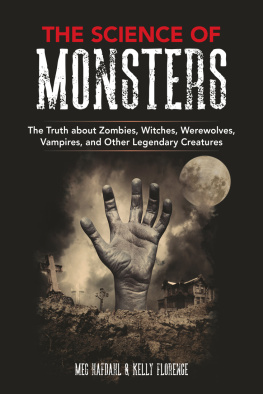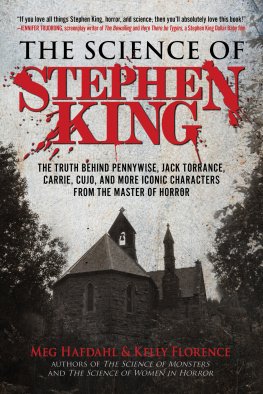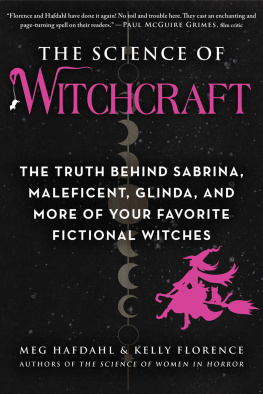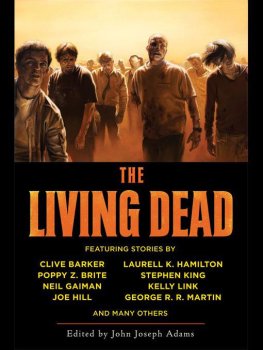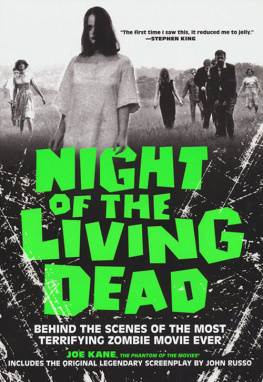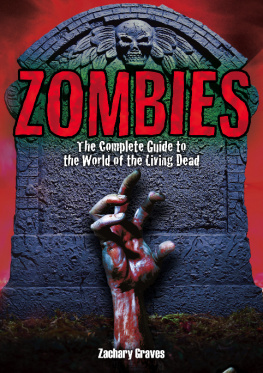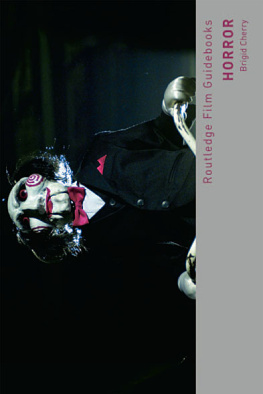

Copyright 2019 by Meg Hafdahl & Kelly Florence
All rights reserved. No part of this book may be reproduced in any manner without the express written consent of the publisher, except in the case of brief excerpts in critical reviews or articles. All inquiries should be addressed to Skyhorse Publishing, 307 West 36th Street, 11th Floor, New York, NY 10018.
Skyhorse Publishing books may be purchased in bulk at special discounts for sales promotion, corporate gifts, fund-raising, or educational purposes. Special editions can also be created to specifications. For details, contact the Special Sales Department, Skyhorse Publishing, 307 West 36th Street, 11th Floor, New York, NY 10018 or .
Skyhorse and Skyhorse Publishing are registered trademarks of Skyhorse Publishing, Inc., a Delaware corporation.
Visit our website at www.skyhorsepublishing.com.
10 9 8 7 6 5 4 3 2 1
Library of Congress Cataloging-in-Publication Data is available on file.
Cover design by Peter Donahue
Cover photograph by gettyimages
Print ISBN: 978-1-5107-4715-9
Ebook ISBN: 978-1-5107-4718-0
Printed in the United States of America
We dedicate this book to our parents, who let us watch horror movies.
CONTENTS
INTRODUCTION
I t was nearly twenty years ago when we met because of a T-shirt. I (Meg) was working in a gift shop when Kelly strolled in, The X-Files emblazoned across her chest. An immediate connection was made, the special kind that forms when two people are thrilled to share in their fandom. Before that day, I had spent countless afternoons screening The Shining for my friends, none of whom cared for it or understood my horror obsession. As our friendship grew, Kelly and I eagerly shared movies with each other, from the silly, low-budget Invasion of the Blood Farmers to the truly terrifying The Ring. (We spent that night wide awake, convinced every gust of wind was Samara preparing to crawl inside and eat us whole!) Our affection for horror became a touchstone in our lives, a catalyst that has brought us to create, consume, and better comprehend the complexities of the horror genre.
This book is a fun and approachable way to understand the science behind the monsters of our favorite horror films, the ones we came back to again and again, whether we were renting from Blockbuster, or watching our own scratchy VHS copies. Weve devoted our lives to the study of film, literature, communication, and true crime, and so we relished this chance to delve deeper into the world of science and to then connect it to the world of horror. We had the opportunity to conduct research and visit with experts at the top of their fields; from scientists at the Mayo Clinic to creatives such as Simon Barrett, the screenwriter behind Blair Witch and V/H/S. Come with us on this journey to unveil the thrilling and sometimes disturbing truths behind the creation of horrors greatest monsters.
SECTION ONE
SLASHERS
CHAPTER ONE
HALLOWEEN
Year of Release: 1978 |
Director: John Carpenter |
Writer: John Carpenter, Debra Hill |
Starring: Jamie Lee Curtis, Donald Pleasence |
Budget: $300,000 |
Box Office: $60 million |
L ike most children growing up in the 1980s, we saw many horror movies on VHS for the first time. The nostalgia of visiting a video store, perusing the covers, and choosing the weekends haul holds countless fond memories for us. (In fact, its the experience that inspired us to create our Horror Rewind podcast.) Halloween was no exception. The plot of this 1978 horror movie begins with a six-year-old boy named Michael Myers. Dressed as a clown, Michael murders his sister by stabbing her with a knife that looks terrifyingly large in his tiny hands. This shock of a child, ready for trick-or-treating, brutally subverting our expectations of innocence is at the heart of Halloweens appeal. Actor and comedian Jody Kujawa reflects on his experience seeing the movie for the first time:
That movie sat with me more than most horror films. It seemed like the most simplistic plot: a guy just wants to kill a lady for no apparent reason. But there is no greater horror than that. The thought that someone is out there, watching us, and they have decided we are going to die. Jamie Lee Curtis also really delivered a personality to the screen that later slasher knockoffs would never be able to correctly mimic because they missed the subtleties of Laurie Strode that made us terrified that she would die. Jamie Lee Curtis and John Carpenter are horror film royalty.
Jamie Lee Curtis was just nineteen years old and an unknown when cast in Halloween. Most of her dialogue was written by producer and co-writer Debra Hill, who had been a babysitter herself in her youth, and prided herself in telling womens stories from womens perspectives. Halloween not only helped solidify Curtiss status as a scream queen but also popularized the final girl trope and slasher films in general.
Was Halloween based on a real person? There is a claim that Myers could be based on Stanley Stiers, who was said to have gone on a killing spree in Iowa in the 1920s. He allegedly murdered his entire family on Halloween. Although the details of this urban legend are strikingly similar to the plot of Halloween, and the story itself is heavily shared on fan sites, there are no credible sources for this event.
John Carpenter, the writer and director of the cult classic, recounts being inspired to write the film while visiting a mental hospital for a class in college. We visited the most serious, mentally ill patients. And there was this kid, he must have been twelve or thirteen and he literally had this look. The look is described by the lines Carpenter wrote for Donald Pleasence, who played psychiatrist Dr. Sam Loomis: This blank, pale emotionless face. Blackest eyes. The devils eyes. I spent eight years trying to reach him and then another seven trying to keep him locked up, because I realized what was living behind that boys eyes was purely and simply evil.
Some people look at the character of Michael Myers and see someone who embodies everyone; a part of themselves that could someday snap. Are we born evil? Are we all capable of murder? That brings us to the plausibility of the plot. Are children capable of murder? According to an article in The Atlantic,children exhibit these traits. In 2013, the American Psychiatric Association included callous and unemotional traits in its diagnostic manual, DSM-5.
Studies have found that kids with callous and unemotional traits are more likely than other kids to become criminals or display aggressive, psychopathic behaviors later in life. While adult psychopaths constitute only a tiny fraction of the general population, studies suggest that they commit half of all violent crimes. Researchers believe that two paths can lead to psychopathy: one dominated by nature, the other by nurture. For some children, their environment can turn them into violent people with a lack of empathy. Those who grow up in abusive homes, or are neglected, may show more traits in common with those who are diagnosed as psychopaths. For other children, a loving home environment doesnt prevent them from displaying the traits.
Next page
